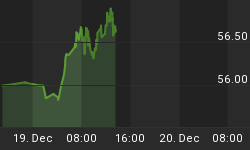In April, Mexico City’s metro system – the largest in Latin America – carried the lowest number of passengers since records began in 1983.
Elsewhere, the Jakarta Mass Rapid Transit (MRT) system saw average daily ridership dip from 93,000 in December 2019 to 4000-5000 at the height of the crisis. By July this had recovered to about 22,000 daily passengers, or just below 25% of normal levels.
William Sabandar, president director of the Jakarta MRT, is confident that the system will recover. “We hope we will soon return to at least 50-60% of our previous average, and this will help to cover operational costs and regain the confidence of our commercial partners,” he told OBG.
“But we have to regain the confidence of our passengers, too. We have put in place very strict health protocols: you have to wear a mask and go through a body temperature scanner to enter a station, while passengers are prohibited from talking, and hand sanitisers are provided throughout the network,” he added.
Increase protection, decrease crowding
This focus on precautionary health measures has been shared by many public transport systems and private operators worldwide.
Dubai, for example, was an early adopter of intensive sanitation of the public metro system, while a long-distance bus company in Myanmar has fitted vehicles with private pods to ease fears around infection.
High-tech approaches are also being explored, such as the microbe-killing air filters currently being tested on the New York subway. Indeed, while good ventilation is key to limiting the spread of Covid-19, this is harder to achieve in many underground transit systems, where carriages have fewer windows and air quality is generally low.
Parallel to this, social distancing must be regulated. To this end, some governments have capped the capacity of public transit systems. In Colombia, for example, the system was limited to 35% of its full capacity in April. Another approach is to step up the number of services.
Increased digitalisation also offers a range of solutions to limiting the risk of infection. For example, replacing paper tickets with multiple-use metro cards means that passengers can limit physical contact over the course of their journey.
Equally, some systems allow passengers to buy a ticket via an app, and then simply present their smartphone to the ticket inspector or scanning machine.
Meanwhile, an app introduced by a Danish rail operator shows the services and carriages that have the most space available, offering a replicable solution to physical distancing challenges.
Disruptive alternatives
However, implementing such measures can often put an extra financial burden on transport systems that are already grappling with a devastating drop-off in fare revenue.
In light of this, authorities in many countries are also promoting alternative forms of mobility, for instance incentivising bicycling through initiatives such as pop-up bike lanes, as Bogotá and Mexico City have done.
The pandemic has also accelerated the global spread of e-scooters, with the UK fast-tracking the legal process behind their adoption nationwide.
Such measures may enable commuters to eschew public transport altogether, or come up with ‘blended’ approaches, whereby they complete part of their journey on a bicycle, or alternate daily between bicycling and public transport.
Another way to ease the burden on public transport is to try to stagger usage throughout the day, with schools and offices being encouraged to open in shifts. Related: Are More Stock Splits On The Horizon In The Tech Sector?
However, the mass transit space may undergo systemic shifts going forward. If the coronavirus pandemic results in a permanent decline in passenger numbers, as some anticipate it will, then mass transit systems will need to start thinking outside the tunnel.
“We have to move away from relying on ridership and maximise opportunities for non-ridership revenue,” Sabandar told OBG. “For example, we could convert rooms in stations into co-working spaces.”
“We want the MRT stations to be the centre of urban regeneration, and to create an environment where it is safe for people to congregate, but where new revenues can be generated,” he added.
By Oxford Business Group
More Top Reads From Safehaven.com
















